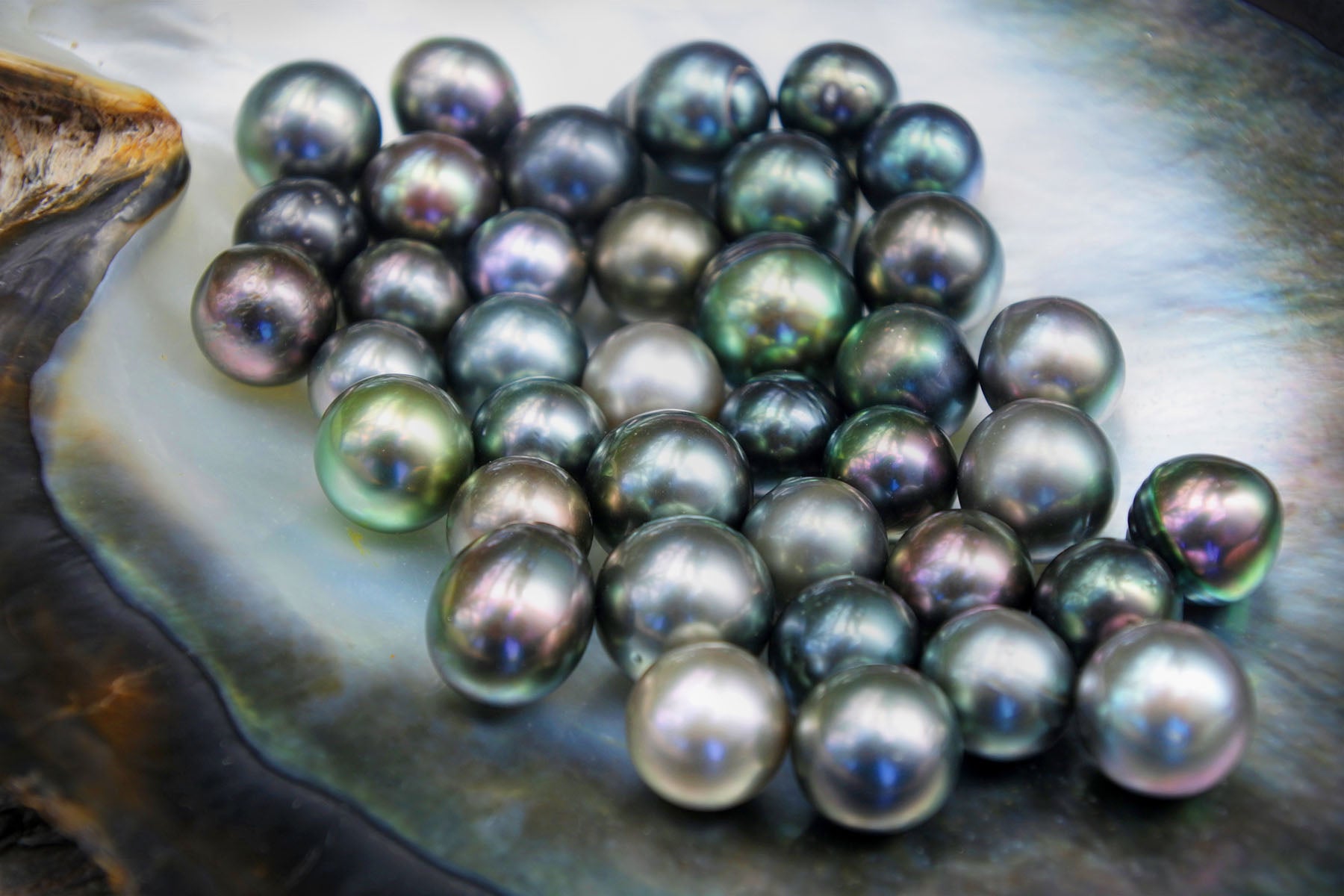Your Cart is Empty
Free Shipping on All Orders Over $100

Black pearls are beautiful and, unlike their white cousins, these ones pack a significant dose of mystery. Due to this, they have become commonly sought after, especially in the jewelry market.
But how they’re cultivated and their history remains unknown to many. This is why we have decided to give you a brief history lesson on black pearls. Let’s get started.
Many people think that black pearls have an extremely mysterious cultivation process. This is a common misconception. In fact, these pearls are formed as any other pearls. But there is one particular thing here that’s worth mentioning.
The black pearl, or Tahitian pearl, produces a wide range of colors - greens, blues, purples, far more than the name implies. But not every oyster is capable of producing a black pearl. Black pearls are produced in the atolls in French Polynesia with black-lipped Pinctada margaritifera, which are capable of producing black pearls due to their array of colors on the lip of these oysters.
As you might know, the materials an oyster uses to produce a pearl are the same ones the oyster uses to line the inside of its own shell. The interior shell of the black-lipped Pinctada margaritifera is called nacre. It features a thick band of black as well as other colors, such as rich greens, blues, and purples. When the pearls are formed near that band, black pearl gems come into existence.
It appears that black pearls were not highly valued in the past as they are today. In fact, there is no mention of them in historical writings dating back to medieval times. The first mention of them dates back to 1850 when 8 grains of the perfectly round black pearl gem got sold for $500. Since there are no documents to confirm if the events were true or not, we are left with the guess that it was maybe Empress Eugine, the wife of Napoleon III, who was the respective buyer.
We do know that she had a magnificent black pearl necklace in her collection. This necklace was sold at Christie's for the sum of $20,000 after the fall of Napoleon III.

Back in the 19th century, Hungary had a revolutionary government. It’s premier, Count Louis Batthyany, had a beautiful black pearl mounted on his scarf pin. The court-martial sanctioned the Count and he was executed in 1849. Before the execution, he gave his pearl to his valet who later gave it to his son.
When the valet's son tried to sell it, the pawnbroker took it to Budapest for appraisal. The authorities heard about this and an investigation followed. The investigation discovered that the pearl had been stolen 150 years ago from the English crown. How it ended up on the Count’s scarf pin remains one of the greatest mysteries in black pearl history.
Hopefully, we have quenched your thirst for a little history lesson on black pearls with the information we’ve shared. The history of black pearls is intriguing no matter your interests.
If you’re in the market for black pearls, check out Kyllonen’s selection of black pearls.